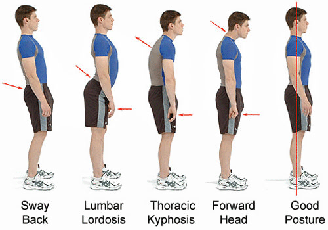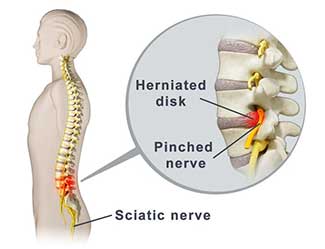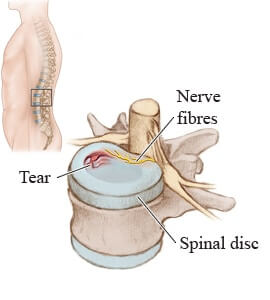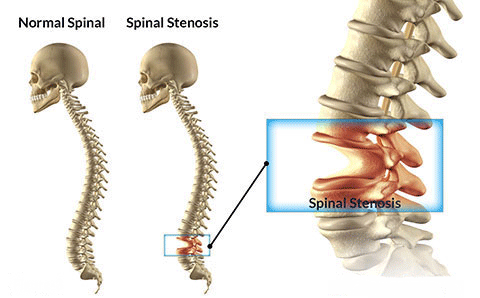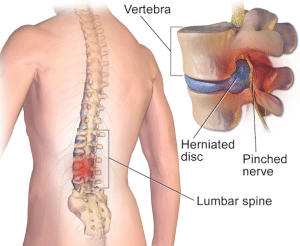Lower Back Pain
What is it?
Lower back pain is a very common complaint. Most people will have it at some point in their lives. It is pain that originates in the lumbar region of the back, which supports much of the weight of the upper body. Because of this, the lumbar region of the back is subjected to a significant amount of pressure and is prone to injuries.
Low back pain is often due to mechanical causes. Traumatic injuries or certain movements, such as lifting something too heavy, or overstretching, for example, can cause ligament tears, tendon tears, or muscle spasms, which account for most causes of acute lower back pain.
In many cases, lower back pain is a consequence of the normal degeneration of the spine as people get older. Throughout our spine, the effects of pressure are absorbed by the intervertebral discs which are disc-shaped structures located between each spinal bone (vertebra). These structures act as cushions between adjacent bones and allow the slight mobility of the spine. The spinal discs have a soft center and a tough exterior, but over time, they naturally dehydrate and become stiffer, losing their cushioning ability.
When excessive pressure or stress is placed on the spine, the disc may be compressed to a point where it may tear or bulge outwards, creating a herniated disc. Herniated discs occur most frequently in the lumbar region of the spine due to the higher pressures in this area. Disc injuries can then cause compression and/or inflammation of spinal nerves, further increasing pain.
Other factors that, with time, end up leading to lower back pain include a narrowing of the spaces between each bone (spinal stenosis), an irregular curvature of the spine (scoliosis), an excessively accentuated arch in the lower back (lordosis), or other structural spinal problems such as back arthritis, sprains of the ligaments or strains or spasms of the muscles of the lower back.
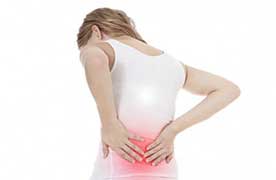
Who gets it?
Almost every adult will experience low back pain at some point in their lifetimes, with the first episode usually occurring between the ages of 30 and 50. Children and adolescents are rarely affected, but it may happen in youth due to backpack overload, sports injuries, or falls/traumas.
Age related
Back pain becomes increasingly common with age due to the normal degeneration of the spine. Severe back pain often strikes those in the 40’s and 50’s when disc degeneration first occurs, leading to microinstability of the vertebrae and reactive muscle spasms. It is more common among people with poor physical fitness, due to a weaker muscular support of the spine. It is also more common in overweight or obese people due to the higher pressure placed on the spine. Lower back pain is also common during pregnancy due to the flexibility of the spinal ligaments along with the additional weight carried in the front of the body.
Work related
Lower back pain is a common work-related disability. Jobs that require heavy lifting, with twisting or vibration of the spine, or that involve a harmful posture are likely to lead to lower back pain.
Stress
Stress can lead to muscle tension, which may also cause lower back pain.
Smoking
Smoking is also a risk factor because it reduces blood flow, contributing to spinal disc degeneration, and because it increases coughing, whose movements often lead to back pain.
What kind of pain results?
Lower back pain can begin suddenly when it is the result of a traumatic injury, a strain or a sprain. When it is a consequence of age-related degeneration of the spine, it usually develops gradually. Sometimes pain can worsen due to an acute worsening of a chronic back pain condition.
Lower back pain is most often short term, but it may also persist for long periods of time, becoming chronic. It is estimated that chronic pain develops in around 20% of people with lower back pain.
The intensity of lower back pain is highly variable, depending on the cause. It can be felt as a dull, constant ache, as a sudden, sharp pain, or as a continuous, severe and highly debilitating pain.
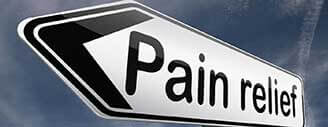
References
- Allegri M, Montella S, Salici F, Valente A, Marchesini M, Compagnone C, Baciarello M, Manferdini ME, Fanelli G (2016). Mechanisms of low back pain: a guide for diagnosis and therapy. F1000Res, 5. pii: F1000 Faculty Rev-1530. doi: 10.12688/f1000research.8105.1
- Alleva J, Hudgins T, Belous J, Kristin Origenes A (2016). Chronic low back pain. Dis Mon, pii: S0011-5029(16)30047-5 [Epub ahead of print]. doi: 10.1016/j.disamonth.2016.05.012
- National Institute of Neurological Disorders and Stroke (2014). Back Pain Fact Sheet. NIH Publication No. 15-5161
- Patrick N, Emanski E, Knaub MA (2016). Acute and Chronic Low Back Pain. Med Clin North Am, 100(1):169-81. doi: 10.1016/j.mcna.2015.08.015

